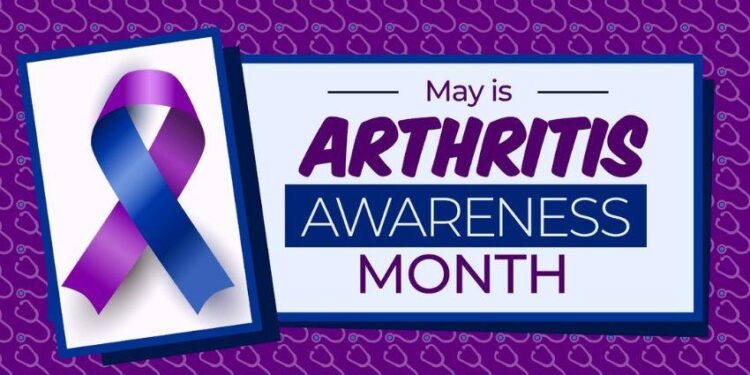April marks Arthritis Awareness Month, a critical time to shed light on the challenges faced by millions living with this debilitating condition. According to the Arthritis Foundation, over 54 million adults in the United States are affected by arthritis, a group of more than 100 different types of joint pain and inflammation. Despite its prevalence, awareness about effective management strategies often remains limited. This month, health organizations and advocates are emphasizing the importance of recognizing symptoms and exploring both medical treatments and lifestyle changes that can significantly improve quality of life for those affected. In this article, KRQE delves into the latest insights on arthritis management, highlighting innovative therapies, self-care practices, and dietary adjustments that can make a tangible difference in how individuals cope with this chronic condition.
Understanding Arthritis: Types, Symptoms, and Diagnosis
Arthritis is a collective term that encompasses over 100 different types of joint inflammation conditions, with osteoarthritis and rheumatoid arthritis being the most prevalent. Osteoarthritis, often associated with aging, primarily affects the cartilage—the protective tissue at the ends of bones—leading to pain and stiffness. Rheumatoid arthritis, on the other hand, is an autoimmune disorder that can occur at any age, resulting in joint swelling and potential systemic complications. Other notable types include psoriatic arthritis, ankylosing spondylitis, and juvenile arthritis, each presenting unique challenges for diagnosis and management.
Key symptoms to be aware of include:
- Joint pain
- Swelling and inflammation
- Stiffness, particularly in the morning
- Reduced range of motion
- Fatigue and fever (in some cases)
Diagnosis typically involves a comprehensive evaluation, including medical history, physical examinations, and various imaging studies. Blood tests can identify specific biomarkers that indicate inflammation or immune response, such as rheumatoid factor or anti-CCP antibodies, particularly in rheumatoid arthritis cases. A qualified healthcare provider may also employ imaging studies like X-rays and MRI to assess joint damage and tailor treatment plans effectively.
The below table illustrates some common diagnostic methods and their purposes:
| Diagnostic Method | Purpose |
|---|---|
| Medical History | Identifies symptoms and patterns |
| Physical Examination | Assesses joint function and pain levels |
| Blood Tests | Detects markers of inflammation |
| X-rays | Visualizes joint changes |
| MRI/CT Scans | Provides detailed images of joints and soft tissues |
Effective Treatment Options: Medications and Alternative Therapies
When it comes to managing arthritis, a variety of treatment options exist that can help alleviate symptoms and enhance quality of life. Medications play a crucial role in this multifaceted approach. Commonly prescribed drugs include nonsteroidal anti-inflammatory drugs (NSAIDs) to reduce pain and inflammation, corticosteroids for immune system modulation, and disease-modifying antirheumatic drugs (DMARDs) that slow disease progression. It’s essential for patients to consult healthcare providers to determine the most effective medication regimen tailored to their specific type of arthritis and overall health condition.
In addition to conventional medications, many individuals are exploring alternative therapies that can complement their treatment plans. These may include physical therapy, acupuncture, and dietary changes rich in anti-inflammatory foods such as omega-3 fatty acids. Evidence is also growing around the benefits of wellness practices, such as yoga and meditation, to manage pain and stress. Here are some alternative therapies gaining traction among arthritis sufferers:
- Acupuncture: A traditional Chinese treatment that may reduce arthritis-related pain.
- Physical Therapy: Personalized exercise programs help enhance mobility and strength.
- Massage Therapy: Can relieve tension and improve joint function.
- Herbal Supplements: Such as turmeric and ginger, known for their anti-inflammatory properties.
Understanding the diverse nature of treatments available empowers individuals facing arthritis challenges. It remains critical for patients to engage in open discussions with their healthcare providers about all potential options, including how they may harmoniously integrate medications and alternative therapies for optimal results.
Lifestyle Modifications: Daily Habits for Managing Arthritis Symptoms
Managing arthritis symptoms requires not just medical treatment but also thoughtful daily habits that promote joint health and reduce discomfort. Incorporating gentle exercises into your routine can enhance flexibility and strength. Low-impact activities, such as walking, swimming, and yoga, can significantly alleviate stiffness while boosting mobility. Additionally, consider integrating mindfulness practices like meditation and deep breathing exercises, which can help in managing pain perception and stress levels.
Nutrition plays a pivotal role in controlling inflammation and supporting overall health. Focus on a diet rich in fruits, vegetables, whole grains, and healthy fats found in fish and nuts. Hydration is equally critical; aim to drink plenty of water throughout the day. Small changes, such as using ergonomic tools for daily tasks or taking regular breaks to rest your joints, can also make a significant impact. Here’s a simple table summarizing these effective strategies:
| Strategy | Description |
|---|---|
| Gentle Exercises | Swimming, walking, and yoga to improve flexibility. |
| Mindfulness Practices | Meditation and deep breathing to manage pain and stress. |
| Healthy Diet | Focus on anti-inflammatory foods and adequate hydration. |
| Ergonomic Tools | Use aids that reduce strain on joints during tasks. |
Concluding Remarks
Arthritis Awareness Month serves as a crucial reminder of the challenges faced by millions living with arthritis. With a commitment to informed management through both medical treatment and proactive lifestyle changes, individuals can significantly improve their quality of life. As communities rally together to raise awareness and support, it becomes essential to remain vigilant about the importance of early detection and comprehensive care. By taking these steps, we can foster a more informed public and empower those affected by arthritis to lead healthier, more fulfilling lives. For further information and resources, viewers are encouraged to visit the KRQE website and stay updated on this ongoing public health issue.































